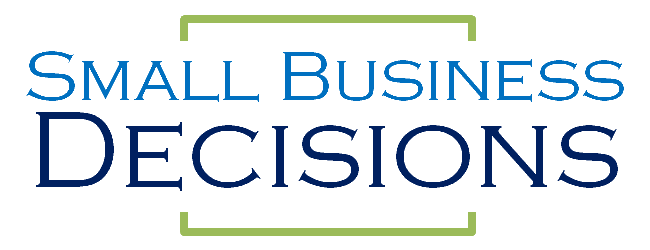Major life disruptions cause people to look for identity and center. Articulate your company mission in tangible terms to create a great sense of purpose that your team can center on.
2020 was full of disruption like no other year. It drove most people to look for connection and belonging in more ways. Qualtrics has dubbed “Belonging” as the Number One Driver for employee engagement going into 2021. Employees are looking at the mission and purpose of your company and deciding if effort towards that end will give them increased identity and center.
Everyone who understands and believes in the mission and purpose of your company will be more engaged in what you’re trying to do. This translates to more purchases from customers and more productivity from team members.
A tale of two companies:
I owned a mechanic shop at one point. I know the market perception that comes with that, but we were the highest rated shop in the county according to google, yelp, and demand force because we embodied our purpose to educate, communicate with, and enable our customers.
Let’s lay out a few sample purpose statements. Which if these mechanics would you rather have fix your car?
- Mechanic X: “We are the best at fixing cars”
- Mechanic Y: “We want car owners to be educated about their cars and their repair options to enable them to make the best repair choice possible for their situation.”
If you define your business purpose based on what you want for your customer, and you take it seriously, then you will start to do business differently.
Choose Purpose, profits will follow
When you know your purpose, you tend to go after solving bigger problems. If you know what people you’re trying to serve, and you take the time to understand their problems, you’ll end up looking at their problems, instead of looking at what you do. Bigger problems mean bigger pain points, which people are willing to pay much more for you to solve.
“Profits and purpose are inextricably linked” – Larry Fink, CEO of Blackrock
We started doing things differently when we focused on customer education and repair choices instead of just repairing cars. This changed our sales to start by helping the customer to understand the problem with their car. We wouldn’t even talk about solutions until the customer fully understood what was causing their problem. That alone increased our average jobs size by more than 30%. Then we took it a step further, we realized that pictures are the best way to educate customers without walking them underneath a car on the lift.
We wrote some in-house software that let us take pictures of car issues so we could share them with the customer. It was an excellent educational tool. Customers absolutely loved it and even wrote about it in reviews, which probably got us even more customers. Our sales increased even more as we focused on our mission of resolving the repair education problems that our customers had.
The tools were such a success, that we kicked off a new software company to produce and sell picture systems for mechanics around the world. We went from being a mechanic shop to producing software that could have a global reach.
Vision, Mission, or Purpose?
There’s some confusion about how these are all supposed to be laid out. There’s not really a “right” answer. I’ll share a few definitions, but keep in mind that these are all tools that you can use to communicate.
- Purpose: Why you exist, what big problem you want to solve
- Vision: Your ideal future
- Mission: Who you serve and what you do for them. Or better: who you serve and what problem you solve for them.
It’s actually best to work from the bottom to the top. Start with mission and vision and work your way into purpose. Oftentimes the mission and vision statement are enough.
How to define your mission statement:
Answer these questions with your leadership team. One secret of clarity is to include the people who will be executing on the mission. They are the ones who feel the customer’s pain every day and can help articulate it.
The best mission statements are one or two sentences that answer these two questions:
- Who are you serving?
- What problems of theirs are you meant to solve?
Who are you serving?
Sometimes you could answer “people” for this. That might be the right answer if you’re a multinational company. Who are you serving? If you’re a local mechanic shop you’ll serve car owners in your neighborhood, city, or county. If you’re a software producer, you probably serve business owners in a specific industry or people who are trying to do a specific activity like vacationing, searching for a recipe, or find videos on remodeling their laundry room.
What problems of theirs are you meant to solve?
This is where things get good.
Figure out what problem you’re solving first, and if that problem needs to be solved. If you identify a big problem you’re going after, then people will pay you big to solve it. If you’re solving a small problem, don’t expect people to pay big for the resolution of the problem.
You will get to purpose when you truly understand who you are serving and why.
If you can’t answer this question, then you may have started with a product you thought was cool and tried to force it on whoever you can find to buy it. That’s OK if you can get from there to here, but if you only make a product, then you’re probably trying to sell it to people who don’t actually need it.
Stuck? Find some good inspiration
Half of the mission statements of the Fortune 500 companies are garbage. This is a terrible waste of a great communication tool. The mission statement should tell you “why”, not your “what”.
Keep in mind that these are companies with global reach, so they will have a much broader answer to “Who are you serving?” than is useful for most businesses. The more specific you get the easier it will be to execute effectively.
A few of my favs:
- Tripadvisor: “To help people around the world plan and have the perfect trip.”
- LinkedIn: “To connect the world’s professionals to make them more productive and successful.”
- Asana: “To help humanity thrive by enabling all teams to work together effortlessly.”
- Workday: “To put people at the center of enterprise software.”
- Bain and Company: “To help our clients create such high levels of economic value that together we set new standards of excellence in our respective industries.”
- American Red Cross: “To prevent and alleviate human suffering in the face of emergencies by mobilizing the power of volunteers and the generosity of donors.
- Nordstrom (pre 2020): “To give customers the most compelling shopping experience possible.”
- Tesla: “To accelerate the world’s transition to sustainable energy.”
- Tumblr.: ” To empower creators to make their best work and get it in front of the audience they deserve.”
- Intuit: “To Improve it’s customers’ financial lives so profoundly, they couldn’t imagine going back to the old way.”
- Walmart: “We save people money so they can live better.”
Set up your company to act on your purpose
When you finish, make sure you are ready for any structural changes. This can drive an entirely new strategy and may take some coaching for your team.
With the mechanic shop software, if we had intended to be the best mechanic shop, we would have seen selling the software to other shops in our city as helping our competition.
We were ready to sell our key differentiator, which could hurt our current business.
And that would be right if we didn’t have a higher mission or purpose. By knowing and acting on our mission of educating car owners, we were able to tackle a much larger problem which created significantly more business potential in the end.
Communicate Communicate Communicate
People only remember a fraction of what they hear once. So don’t expect a single company-wide email or announcement of your purpose to stick. Put together a campaign. Put it on your website, email signature, business card, office foyer, letterhead, PowerPoint template, and all your vehicles. It’ll take some time, but a clearly articulated and understood purpose will change the way your team approaches the work they do.


